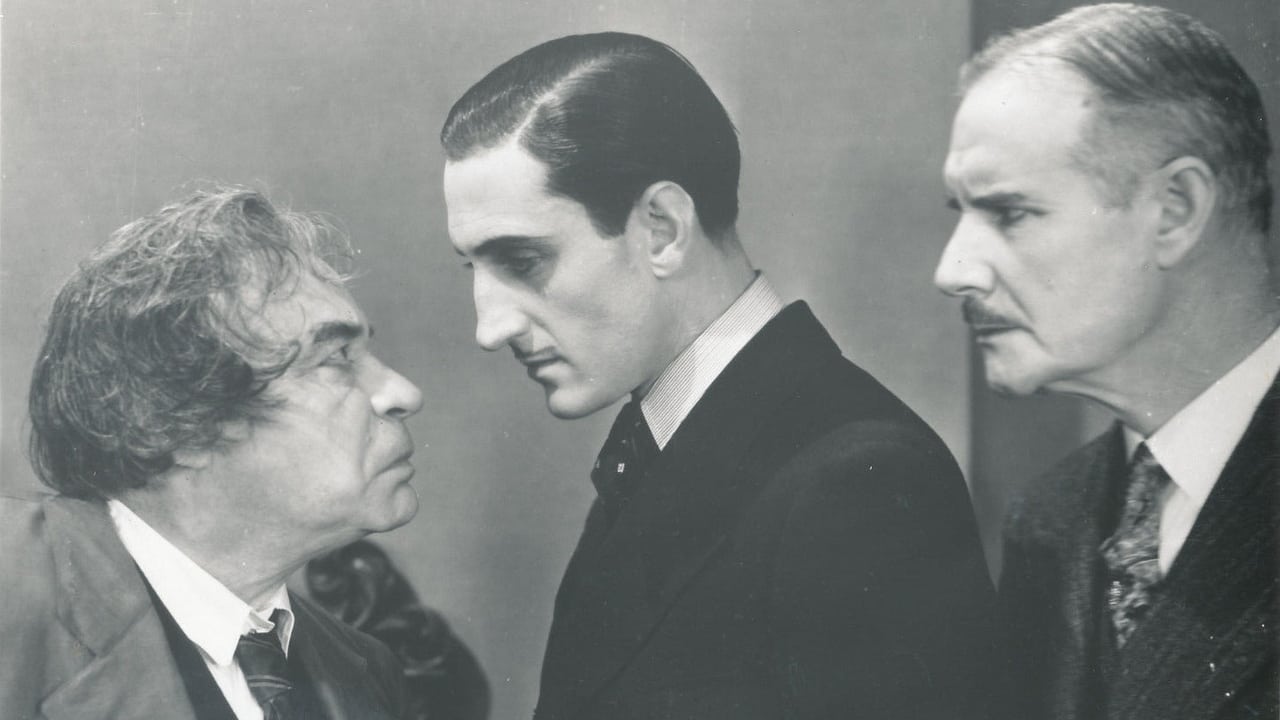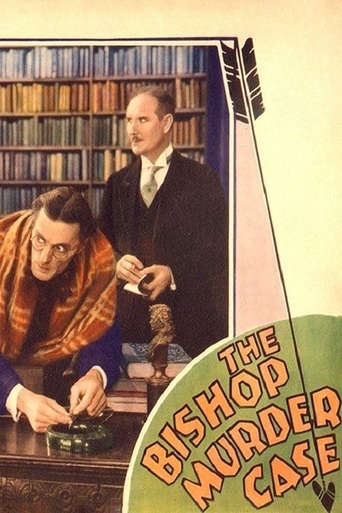

I gave this film a 9 out of 10, because it was exactly what I expected it to be.
... View MoreI wanted to like it more than I actually did... But much of the humor totally escaped me and I walked out only mildly impressed.
... View MoreA great movie, one of the best of this year. There was a bit of confusion at one point in the plot, but nothing serious.
... View MoreThe movie turns out to be a little better than the average. Starting from a romantic formula often seen in the cinema, it ends in the most predictable (and somewhat bland) way.
... View MoreThis was the third Philo Vance detective film, and the only one to star Basil Rathbone. William Powell played Vance in the two previous films (1929 and 1930) and the two succeeding ones (1930 and 1933). It is fascinating to see the young Rathbone nine years before he made his first Sherlock Holmes film, 'The Hound of the Baskervilles' (1939). He is very much 'Sherlock before Sherlock'. There are two amazing character actors in this one, George F. Marion and Zelda Sears as the Drukkers, brother and sister. What faces! That was when people looked different, not the same as now when everyone is the same. The director makes the most of them, and they certainly add an eerie dimension to this story. A lot of people get killed in this tale, though of course we do not see the blood and gore because it is only 1930, and it is all we can do to hear the early sound sometimes. Cedric Gibbons as Art Director did some bold sets, with enormously high windows and huge rooms. The film is creaky in many ways, but it is a ripping yarn. Try and figure this one out! This is perhaps the cinema's earliest portrayal of a serial killer, which goes to prove that nothing is new. It is not a whodunnit, it is a whodunn'em.
... View MoreI found all of the Philo Vance films watchable, with the zippy and witty Kennel head and shoulders above the rest. Bishop was pretty good too but suffered from a cast of actors stuck in the silent era and displaying the full range of intensely melodramatic emotions that are were so essential to the making of and enjoyment of watching a silent film. Static cameras are as nothing to tortured eyes and semaphore arm histrionics.Mr. (Cock) Robin is found flat out murdered, apparently shot with an incredibly long arrow but Vance played by skinny and incisive Basil Rathbone knows better. He predicts a series of ghastly and inhuman murders will follow conceived by a intellect bent on playing games with his pursuers by couching his dastardly deeds in very handy nursery rhymes. He and one of the suspects, evergreen Roland Young are the only two to act naturally throughout, if still very slightly stagey. The photography is occasionally startlingly good, if still static. None of these criticisms bother me, I love it just the same as a well crafted atmospheric entertaining potboiler. Favourite bits: The scene in Dillard's library with the thunderstorm raging outside; the sedate and well-mannered way Vance and the cops enter Dillard's aerodrome of a house to search for the murderer.I hadn't seen this since 1995, the last time UK Channel 4 gave anyone interested their opportunity to watch it. TCM UK unlike TCM US will never have room for it in their admirably varied schedule either (hem). But it's worth hunting down with all its faults for 90 minutes in the company of the world of 1929.
... View MoreS. S. Van Dine's socialite detective is brought to film for the third time - this time having Basil Rathbone play Philo Vance. While I will not argue with some of the critical assertions that the film is static, stationary, and decidedly creaky, not too mention very far-fetched and predictable, The Bishop Murder Case was made in 1930 when sound was just coming into its own. That is very evident in this film as much of the dialog is hard to hear and comprehend. The stationary microphone was used throughout with director Nick Grinde using lots of expansive scenes with the actors standing around the screened microphone as was the case for sound pictures then. That being said, the film is a pretty decent detective mystery for its time. Rathbone makes an affable Vance. His character is given little depth, however. The mystery, while not entirely and sufficiently explained to me has some things going for it with red herrings involving chess pieces, archery, Ibsen plays, and murders emulating nursery rhymes of a kind. While Grinde directs with the limitations at hand, I did like some of his wide shots. The balcony of the building scene when the professor discovers a man killed by an arrow looked quite impressive, and you can see some wide shots that most definitely mirror German film expressionism of the 1920s with some large, long windows shot in the backdrops of several scenes. All the actors are competent with some real nice character turns by the likes of Charles Quartermaine as a chess expert, George F. Marion as a hunchbacked pseudo-intellectual, James Donlan as a police sergeant(giving the film some of its much needed light moments), and Roland Young, Cosmo Topper himself, turning in a sly, witty performance as a possible suspect. The script is unfortunately riddled with too much ambiguity to make any real sense, but when all is said and done, The Bishop Murder case is mildly entertaining - again making consideration for the time it was made.
... View More"The Bishop Murder Case" is one of the best in the Philo Vance film series. The mystery seems a bit silly at first when children's nursery rhymes are used by the perpetrator of the crimes to publicize his murders, not unlike methods used by present-day serial killers. But once the plot unfolds the nursery rhyme angle makes complete sense. The Bishop is a key figure in solving the mystery as the title indicates. So keep your eyes focused on that clue. I won't say any more except to add that this is a complex mystery.Basil Rathbone is second only to William Powell in breathing life into S.S. Van Dine's famous private investigator. It's obvious from this performance why Rathbone was chosen at the end of the decade to play Sherlock Holmes. The other actor who shines in this movie is Roland Young. Though much of the acting hearkens back to the silent era which was coming to an end, Rathbone and Young seem modern in their approach. From playing on stage and in silent pictures, actors were used to wild exaggerations and outlandish gesticulations which were no longer needed now that movies could talk. Several of the characters in "The Bishop Murder Case" have not yet adjusted to working with sound. Not so Rathbone and Young.Another early talky distraction for modern viewers is the absence of music for dramatic effect. Since live music was used to accentuate the silent screen action and mood, it seems strange that music was not immediately utilized for the same purposes on the talky screen. Producers were misinformed that music coming from nowhere would puzzle and confuse the audience. So it took a few years for Hollywood to rid itself of this misconception. The decision not to use music plus fairly primitive sound effects (the viewer will readily recognize the sound of thunder as the sound of huge sheets of metal being snapped)take away from the overall effects of this otherwise clever and well-written murder mystery.
... View More